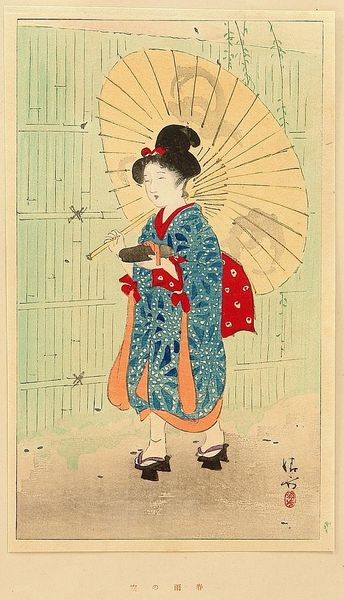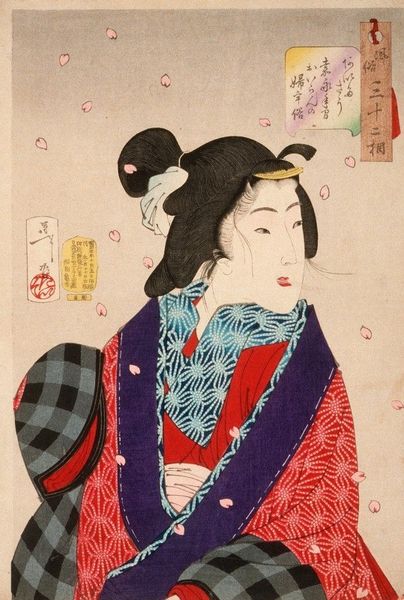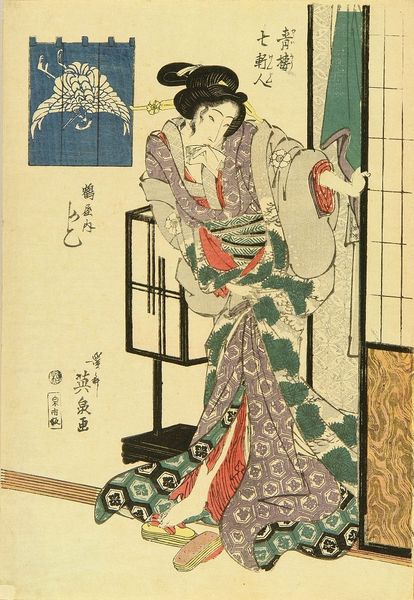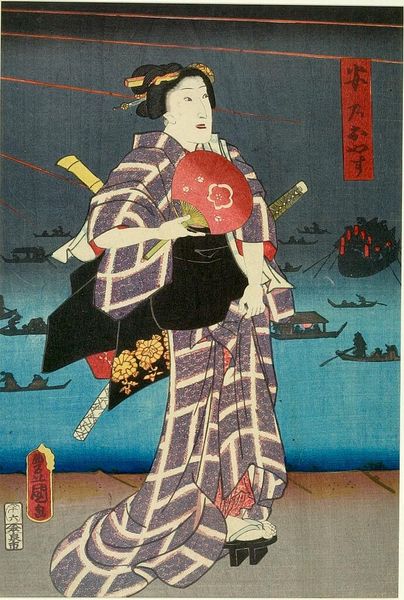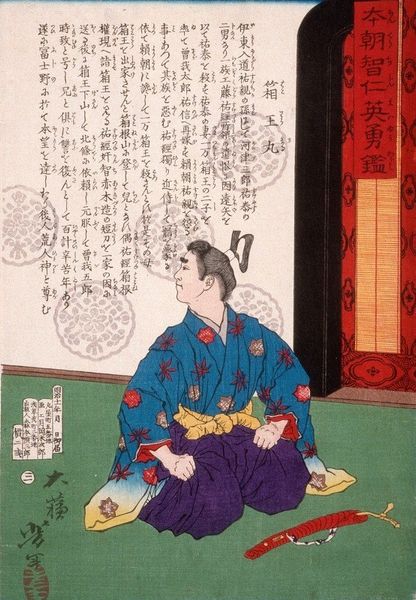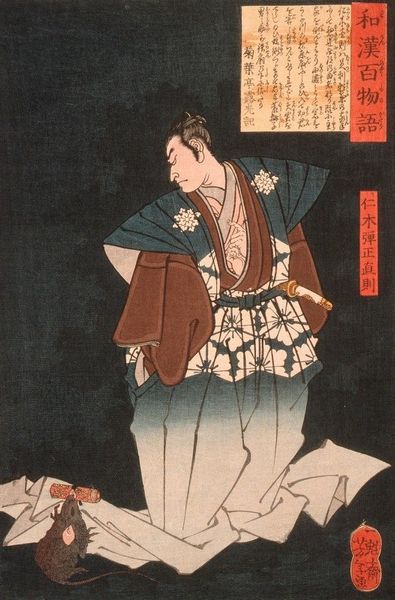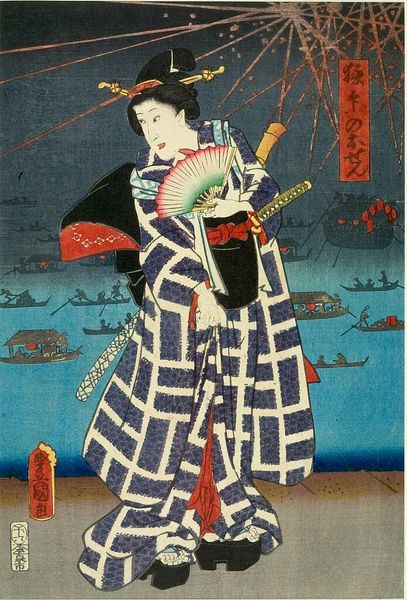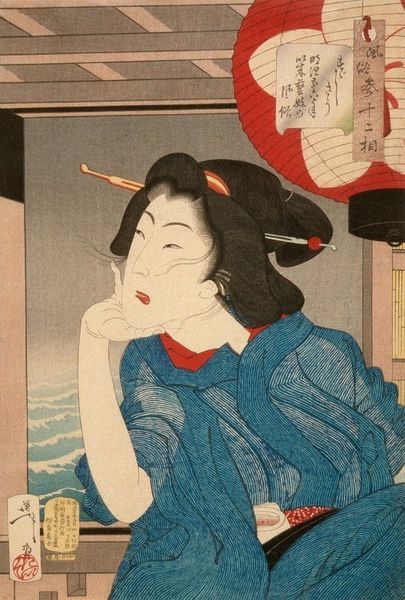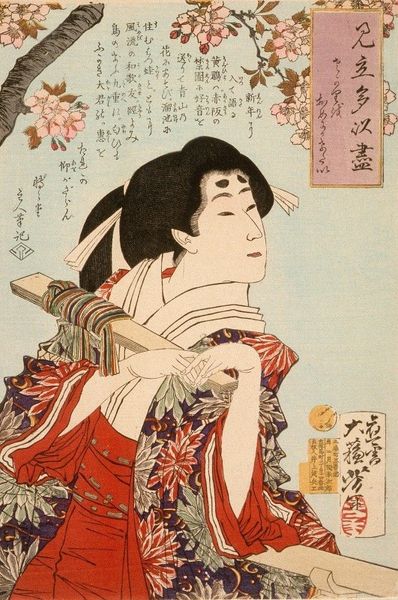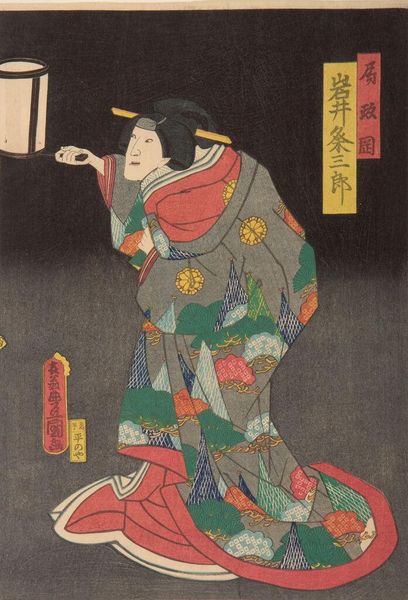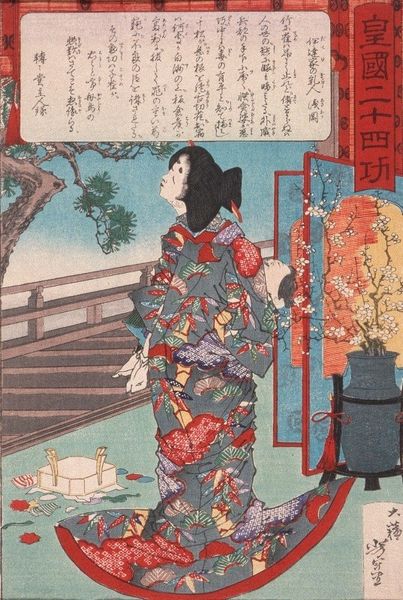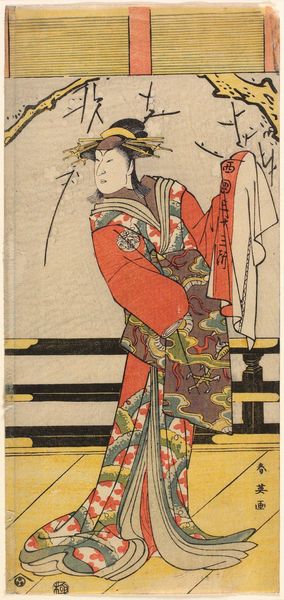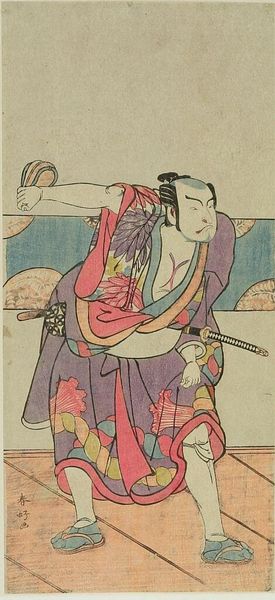
Copyright: Public Domain: Artvee
Editor: This is "Lady Kido Suikōin," a woodblock print by Tsukioka Yoshitoshi, created in 1887. There’s something so compelling about the contrast between the elegant beauty of the woman and the swords she’s carrying. What draws your eye when you look at this? Curator: Isn't it marvelous? The lady seems suspended between worlds – the refined interior with its shoji screens and that raw, almost theatrical presence those swords lend her. It’s a dance between serenity and potential storm, don't you think? Notice the floral pattern on her kimono. It offers such gentle beauty against the swords implying possible conflict. Editor: I see what you mean about the serenity and the storm. Do you think the text above plays into that contrast? Curator: Ah, good eye! Absolutely. The text is likely part of the narrative, possibly hinting at the historical context or the story of Lady Kido. Woodblock prints were often a medium for storytelling, not just portraiture. Do you feel the colours enhance the tension? That incredible almost-aquatic blue and the splash of bold red at the lining… Editor: They do. The colour feels so deliberate, heightening the emotional impact. Curator: It's Yoshitoshi’s way of pulling us into her story, a visual echo of the drama unfolding, or perhaps about to unfold. Consider that Ukiyo-e prints were affordable popular art, telling the stories that mattered to the people of the time. And Yoshitoshi was a master of imbuing them with layers. What would you say is most memorable? Editor: It's the visual storytelling. You see this elegant portrait but then these objects disrupt expectations. It pushes beyond just being beautiful. Curator: Indeed! It stays with you. These echoes across time about inner strength expressed within accepted cultural standards... Editor: Definitely. Thank you, it is good food for thought. Curator: My pleasure entirely, you prompted great insights!
Comments
No comments
Be the first to comment and join the conversation on the ultimate creative platform.
